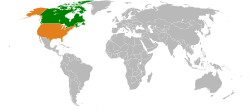| Nymphaea leibergii | |
|---|---|
 | |
 | |
| Scientific classification | |
| Kingdom: | Plantae |
| Clade: | Tracheophytes |
| Clade: | Angiosperms |
| Order: | Nymphaeales |
| Family: | Nymphaeaceae |
| Genus: | Nymphaea |
| Subgenus: | Nymphaea subg. Nymphaea |
| Section: | Nymphaea sect. Chamaenymphaea |
| Species: | N. leibergii |
| Binomial name | |
| Nymphaea leibergii | |
 | |
| It is native to Canada and Northern USA [3] | |
| Synonyms [3] | |
| |
Nymphaea leibergii, also known as the dwarf waterlily and Leiberg's waterlily, is a perennial emergent aquatic plant belonging to the genus Nymphaea . It can be found across northern North America in ponds and slow moving streams. Populations of this plant are infrequent throughout its range, and it is protected as a state threatened plant in Maine, Michigan, and Minnesota. [4]

